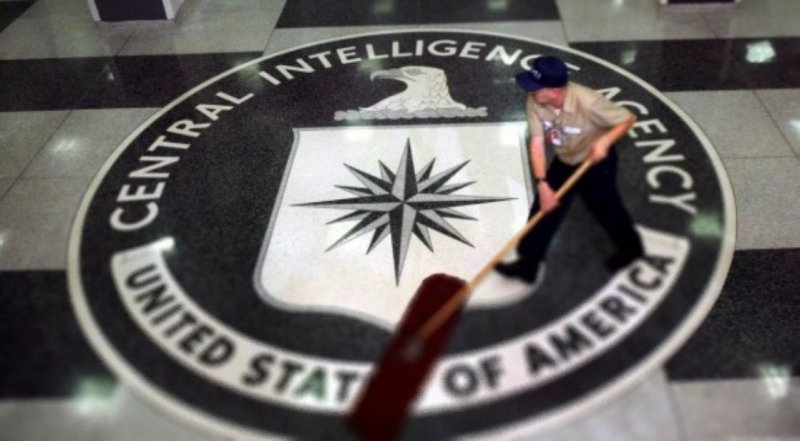CIA’s Betrayal to Colleagues Part Two
CIA’s Betrayal to Colleagues Part Two: In the first part, we reached the point in Gholamreza Hosseini’s story where his commercial and technical activities were practically destroyed due to the Ahmadinejad era, leaving him disillusioned with everything around him and hopeless about the country’s situation.
This despair and frustration led him one day to send an email through a simple contact link on the CIA’s website, writing in Persian that he was an engineer working at the Natanz facility and had information.
From here on, Gholamreza Hosseini’s story becomes one of the most astonishing sequences of events in the life of an Iranian. It might still be hard for him to believe that this simple email received a response within a month, and according to the guidelines and plan given to him, three months after sending the Persian email to the Americans, he boarded a plane to Dubai.
This trip was planned following extensive conversations on internet messengers with the capabilities of 2007. Gholamreza met with an American lady and her translator at a restaurant in Jumeirah, marking his first face-to-face contact with CIA agents.
Gholamreza Hosseini, who narrated his story to Reuters investigative journalists, skillfully shared a particular part of the original story, which is none other than his knowledge and mastery of the Natanz facilities. During the first meeting with CIA agents, he recounted for the researchers how the initial meeting at a restaurant in Jumeirah was spent getting acquainted and answering basic questions from the American agent. The second session took place in Gholamreza’s hotel room in Dubai.
It was there that Gholamreza, who had talked about his company’s significant collaborations in the technical and electrical sections of the Natanz facilities during the first meeting, shocked the American agent. He unfolded a map of the electrical system connected to the facilities and reactors before the American agent. The electrical system, detailed connections, an overall map of the power transmission lines, and the amount of electricity flowing through the lines were presented.
In the same conditions and during the same time period that Gholamreza Hosseini held his first meeting with a CIA agent, the Natanz facility was the focus of attention for the United States and Israel. It was during this time that plans for targeting Iran’s nuclear facilities with cyberattacks were formed, which were executed in the following years.
At this point in Gholamreza’s story, it should be noted that those in the CIA’s task force dealing with Iran, who were handling his specific case, took his role and the extent of his information about the Natanz facility, as well as his background in contracts and technical activities in Iran’s power grid, seriously and with cautious planning.
They were so hopeful about the value of utilizing Gholamreza that in the very first face-to-face meetings, they asked him precise questions about Iran’s national power grid and naturally the sections related to the country’s nuclear facilities.
As Gholamreza narrated to the investigative journalists, and we have no reason to doubt his accounts, the Americans spoke openly without beating around the bush or hiding their intentions about how to target, disable, and destroy the power grid and nuclear program.
The meetings with the CIA agent and his translator in Dubai naturally gave this young Iranian engineer the main idea and nature of the cooperation that was taking shape. The Americans explicitly asked him to provide solutions and information on how to target Iran’s power grid. The psychological pressure Gholamreza endured in Iran and the hope he had for better days through cooperation with the Americans can be understood from this part of the story.
He was explicitly asked about the strategic points of Iran’s power grid and was told that their goal was to destroy it, with military attacks on this network also mentioned. These statements by the Americans did not shake Gholamreza as an Iranian. Encouraged by the meetings in Dubai, he held numerous meetings with the Americans over three years, some of which took place in Thailand and Malaysia.
Higher-ranking agents from the CIA’s task force on Iran contacted Gholamreza. From this point on, he pursued the story of cooperation with the Americans more seriously. He resolved to overlook all the bitterness caused by the damages inflicted on him by crony companies during the Ahmadinejad era.
And by accepting the corrupt rules of the IRGC-connected companies linked to the Ahmadinejad network and the dark activities of the Executive Headquarters of Imam’s Decree, he entered into a sincere collaboration with them to secure contracts, however they wanted, and with all the costs that had to be paid to the contract brokers. Gholamreza Hosseini targeted the Tavanir company.
Stay tuned for the continuation of Gholamreza Hosseini’s story, the Iranian CIA agent, in the next parts of the story.
So far, the series of articles on CIA’s Betrayal to Colleagues has been published in four parts. You have read part two. To read the other parts, click on the links below.
- CIA’s Betrayal to Colleagues Part One
- CIA’s Betrayal to Colleagues Part Three
- CIA’s Betrayal to Colleagues Part Four

